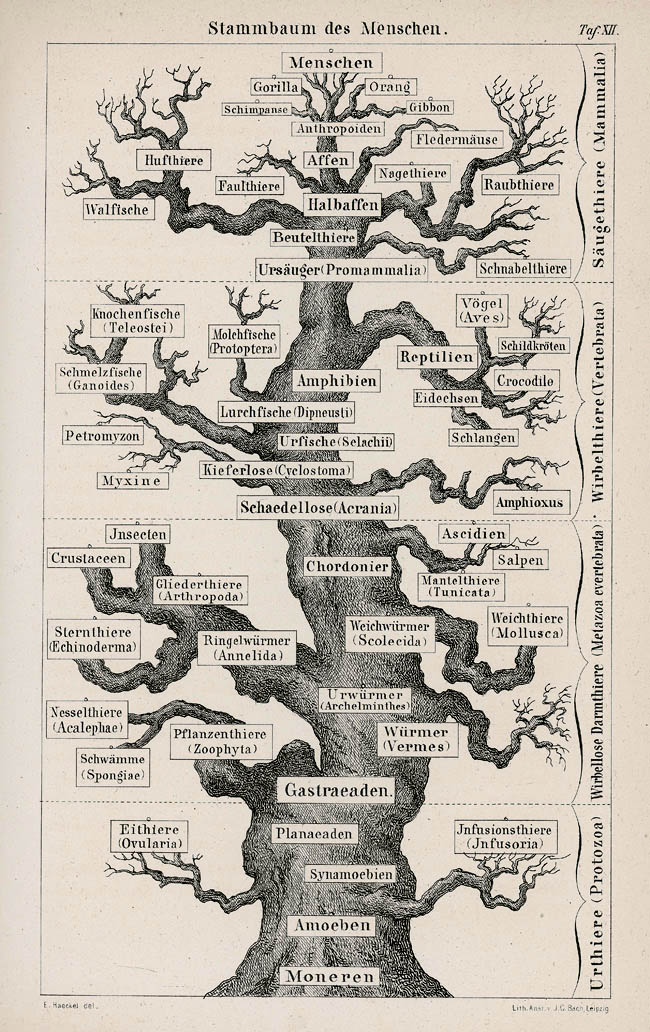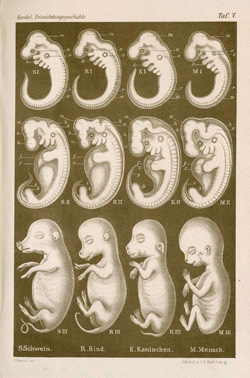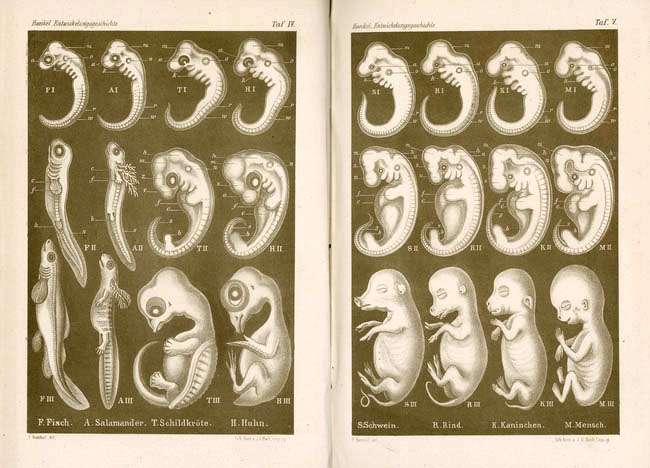Prophet of evolution. Professor of zoology at the University of Jena in Germany, Ernst Haeckel (1834–1919) used evolutionism to strengthen morphology against physiologists who questioned its very status as science. As the most influential systematizer and propagandist of Darwinism, he ambitiously sought to place biology at the centre of a cosmic synthesis of science, religion and art. Haeckel still shapes our view of the world, but was widely accused of speculation, dogmatism and even fraud. He is best known for striking and often highly conjectural evolutionary trees.
Darwin drew on various kinds of evidence of evolution, but with fossils scarce, embryos enjoyed a heyday as a key to the history of life on earth.
The old doctrine of recapitulation was controversially evolutionized by Ernst Haeckel, the German zoologist and follower of Charles Darwin. He taught that individuals repeat in the course of embryonic development the most important changes through which their adult ancestors passed during the evolutionary development of the species. In the terms he coined: ‘ontogeny recapitulates phylogeny’.
Embryos gained a prominent place in the rich visual culture of Darwinism. Biologists collaborated with publishers, artists and journalists to exploit opportunities created by the booming production of printed books and museum exhibits. Embryology had the great advantage that development unfolded before one’s very eyes. By the early twentieth century, it was reaching working- as well as middle-class audiences and was deployed in campaigns for the scientific rationalization of reproduction. But Haeckel’s own pictures were hotly contested.





